Lüderitz crystallizes the past, the present and the future of Namibia. A town founded by the German colonists when a diamonds deposit was found at the beginning of the century. The WWI German surrender leads to the colonists' expropriation and the country was put under the South Africa supervision before the country takes flight with the independence proclamation in 1990 what makes Namibia one of the youngest country in Africa. Lüderitz divides between the port activity – raw material freight like zinc intended to the countries of the northern hemisphere – and the diamond-mining. Around the city, a huge, forbidden area stretches where only the Namdeb company imposes its authority. Half of this company belongs to the Namibian government the other one to the undisputed diamond-business-leader De Beers firm.
To understand the universe of these precious stones, we go to the ghost city of Kolmanskop. Around the village the first Namibian diamond was found ; the Germans quickly besieged the place and the Kolmanskop tiny hamlet popped out of the ground. The village frenziedly lived a few years until the diamonds deposit dried up and new spots were discovered southwards. The houses were abandoned and the area became uninhabited. Thus, the life goes at the diamond kingdom and its diggers that follow the vein.
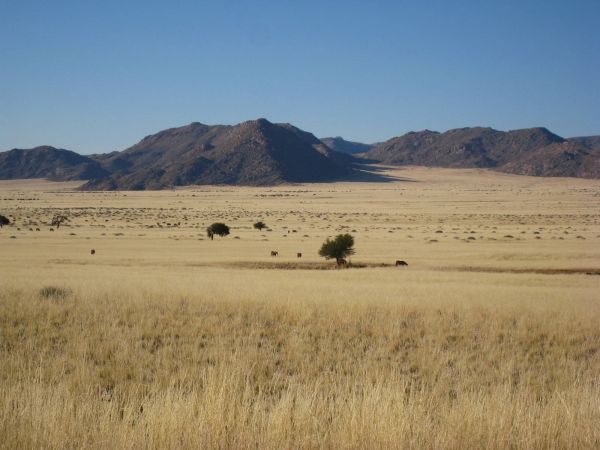
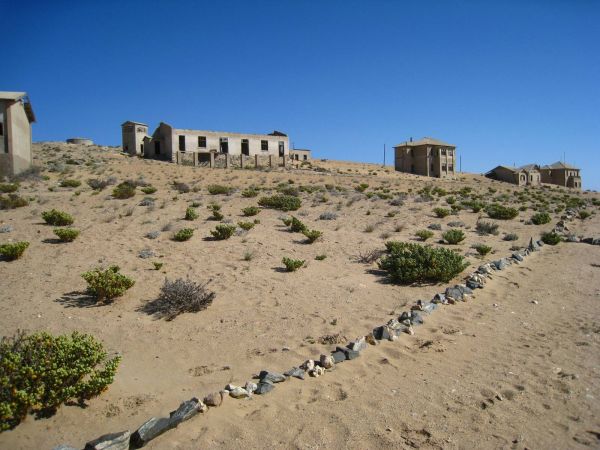
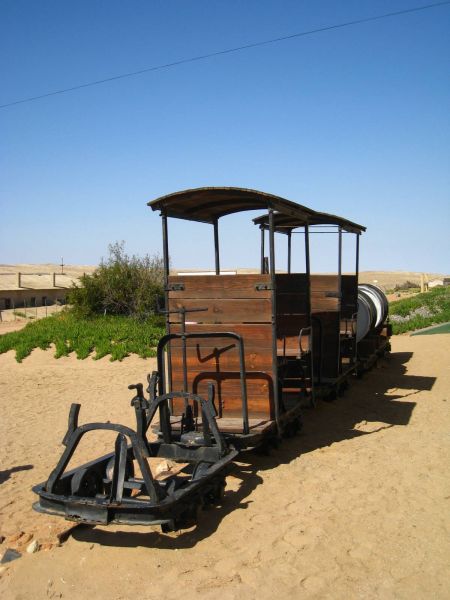

In the afternoon, we visit the coastal landscapes in the surroundings of Lüderitz. Desert beaches, black rock and a seal colony that lounge on a stony islet.
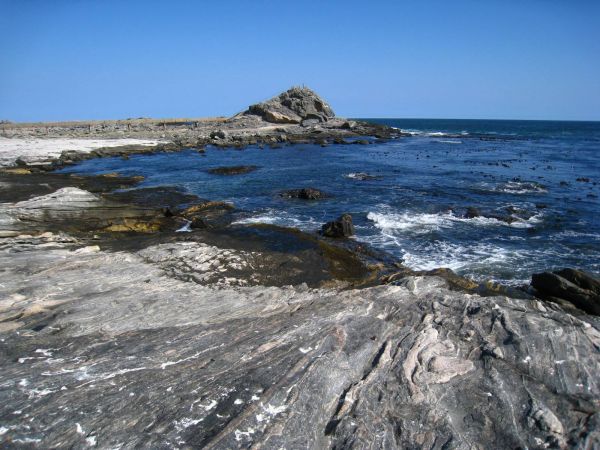
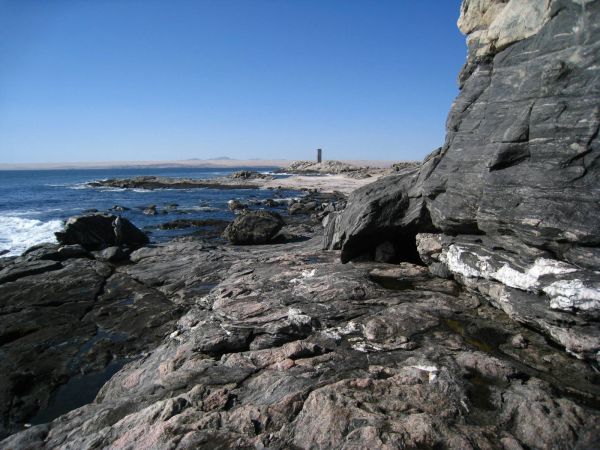
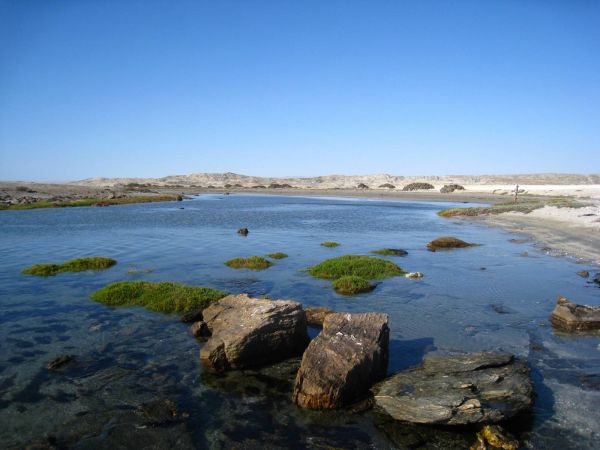
Back from our stroll, we seize shovel and mattock to turn over the sand of Agatha Beach. But that's not ground-buried diamonds we find here but modest sand roses. Andrès, from the tourist office, teaches us how to dig out these natural curiosities that, as soon as we discover them become our jewels. You need to scratch the sand then when the salt traces appears, we delicately delimit the hard « zone » before getting it out. A dash of water to clean the rock and sand mixture and the petals of the silica rose starts to glisten in the beams of the sunset. Happy, we go back with our fragile booty which stretches at the rear window shelf of the car.
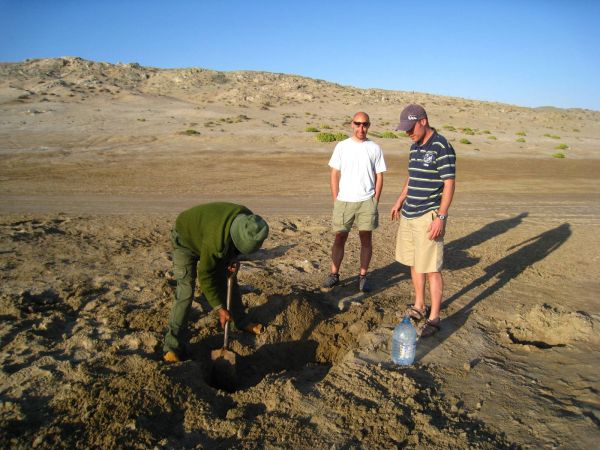
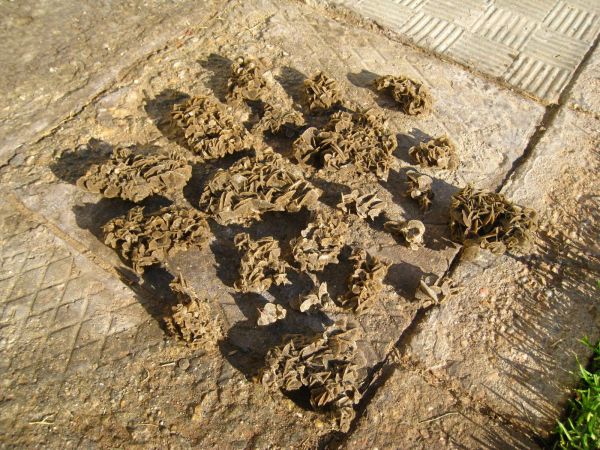
Friday 20 June 2008
The diamonds rush
By dorian on Friday 20 June 2008, 18:51 - RTW2-Namibia
Thursday 19 June 2008
The maze of Fish river canyon
By dorian on Thursday 19 June 2008, 16:19 - RTW2-Namibia
To inaugurate the « unlimited mileage » package of our hire Opel Corsa, we decide to head for Namibia. The South-african discovery will fill the second part of the trip. The asphalt ribbon unrolls over 700km up to the south Namibian border. The road is desesperately straight and the dotted line on the ground as hypnotizing as the triteness of the scenery. We spend the night just after the border crossing.
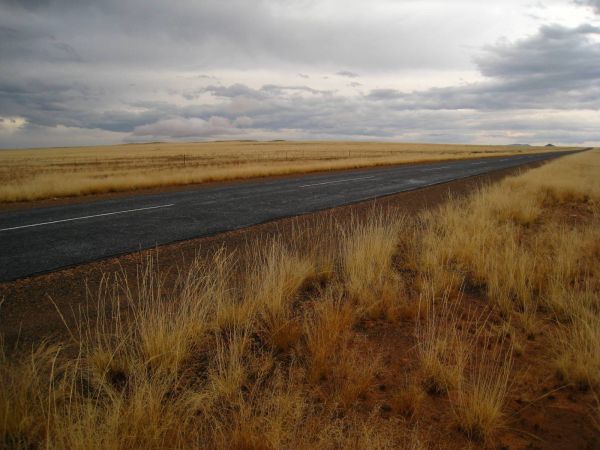

In the morning, we start our first untarred road to reach the Hobas village. On the way, we catch sight of elegant springboks which look us up and down before clearing off making some prodigious several-meter leaps. A rectangular water tank and few huts announce the beginning of Hobas. This village is the departure point to visit the Fish river canyon; the second largest canyon in the world after the Colorado one in the USA. Unlike its elder brother we can only follow inside by kayak, a trail describes the meanders of this canyon. A great 5-day 85-kilometer trek to reach the Ai-Ais village and the possibility to catch a shuttle back to Hobas. However before embarking on the path, a local responsible requires a medical certificate for the trekking ability we don't have. Impossible to negociate, we'll have to content ourselves with admiring the canyon from the upper part. We thought about looking for a doctor in the campsite beside the village but we finally changed our mind.
A long, straight, clay-reddish, about-10-kilometer lane ends on a viewpoint. The monotony in no way unveils what is waiting for us. We slam the door and the suspense is still there. A few steps ahead and the fracture suddenly appears. A break as emotionnal as geological. In the past, a plain that a river gnawed for millions of years and down to several hundreds meters deep. A grandiose spectacle. Hairpin curves, rocky different-level plateaus, sharpened astoundingly-proportioned ridges. Long minutes of silence to contemplate, to scan and to get intoxicated.
And to wonder at all of this, less that 10 tourists. Lucky we are, but for sure the touristic potential in Namibia is huge and the authorities take a long time developping it.
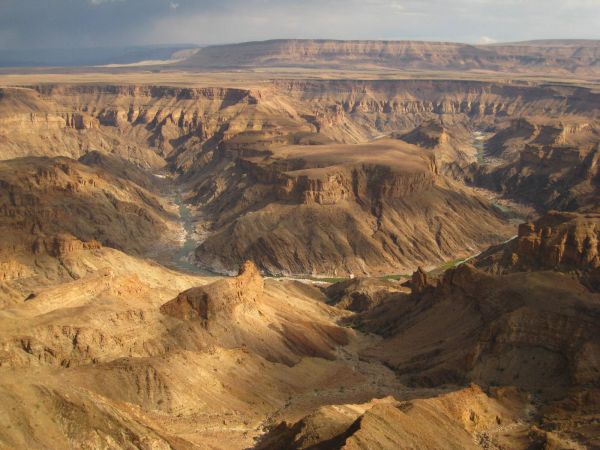
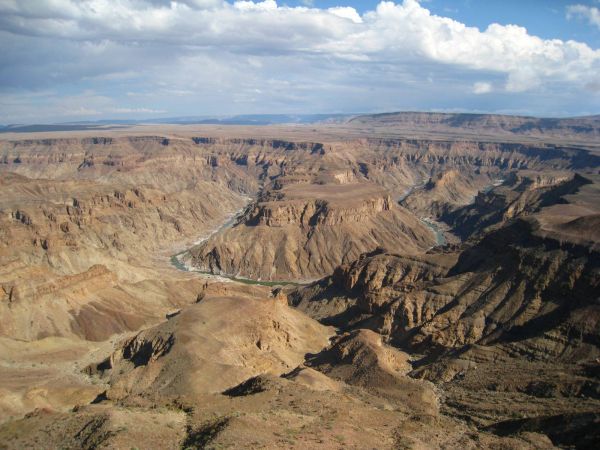
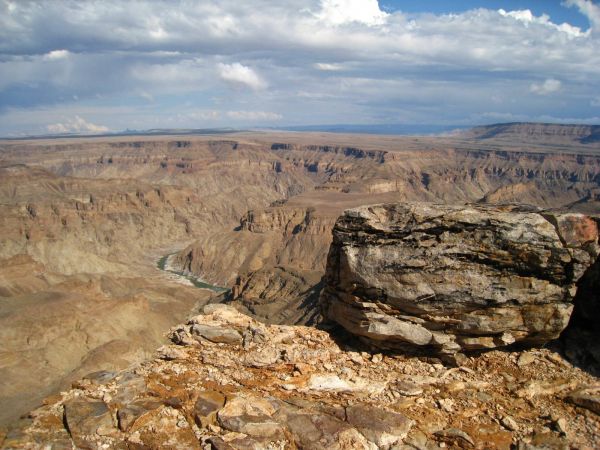
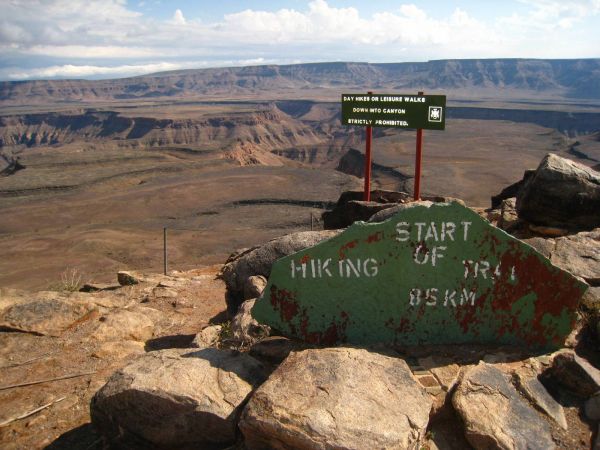
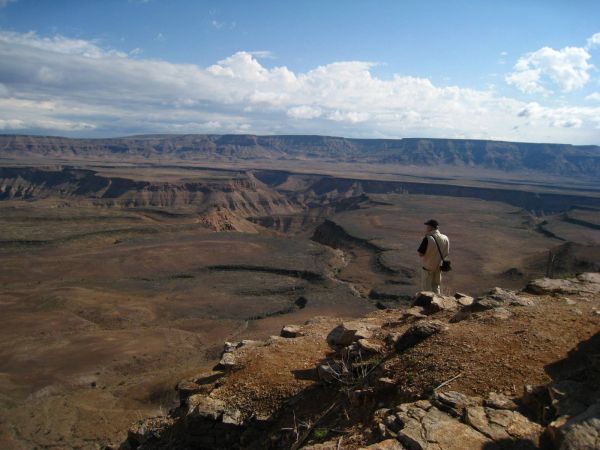
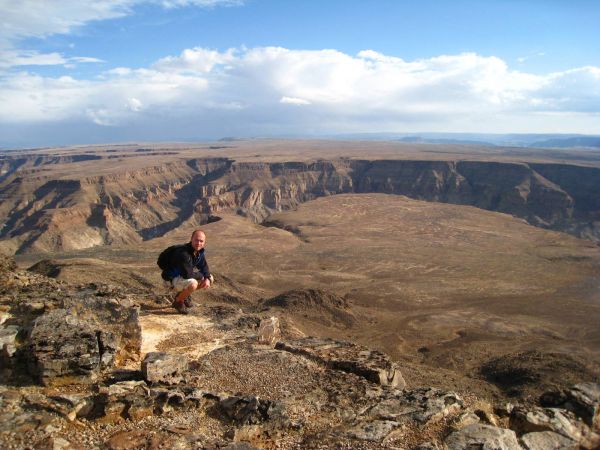

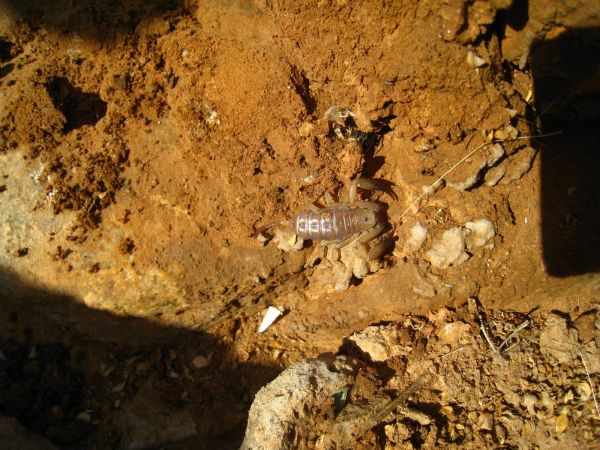
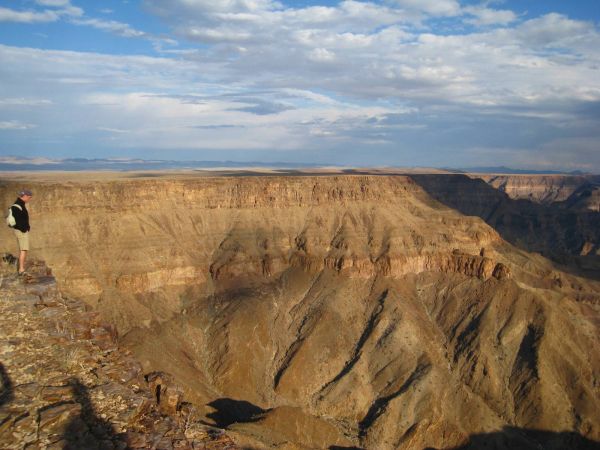
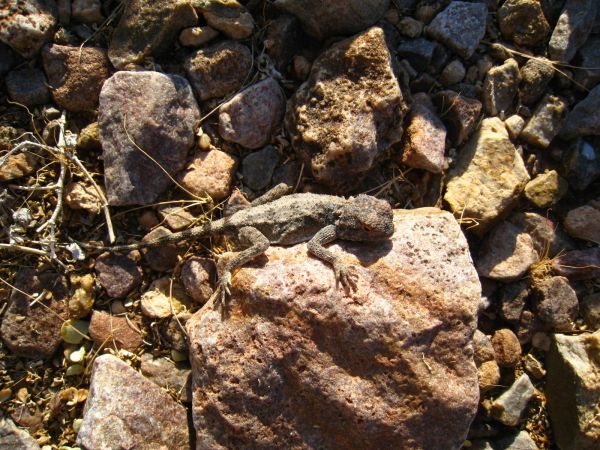
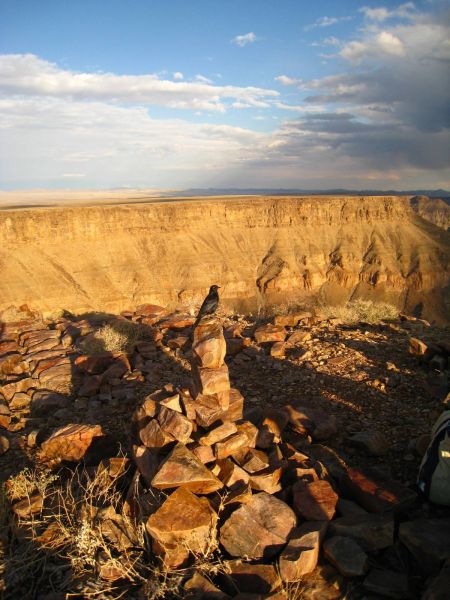
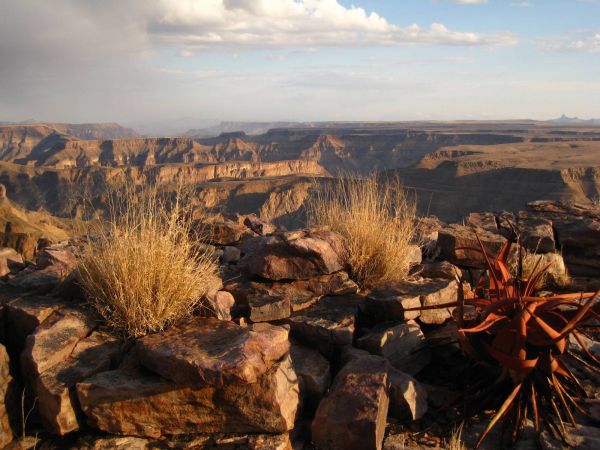
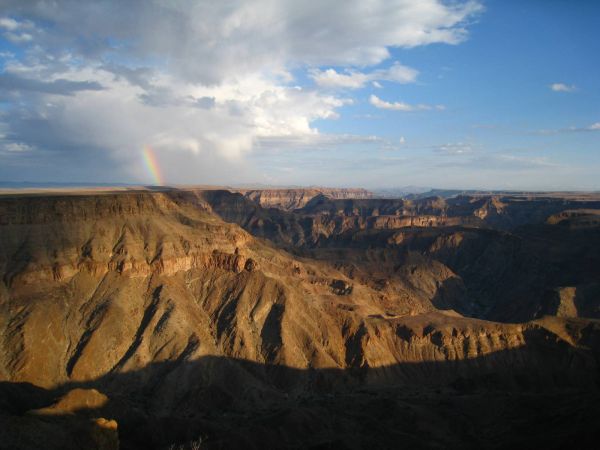
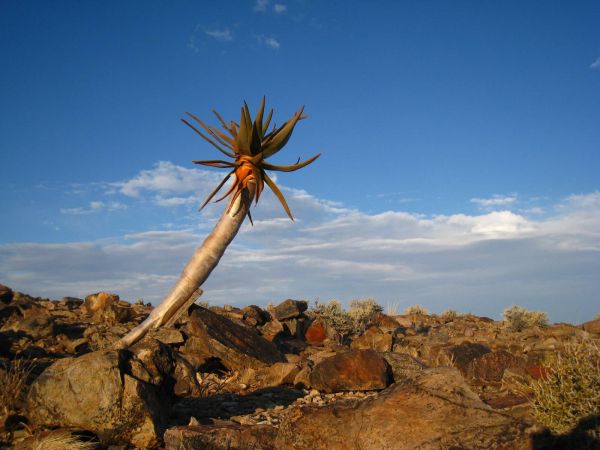
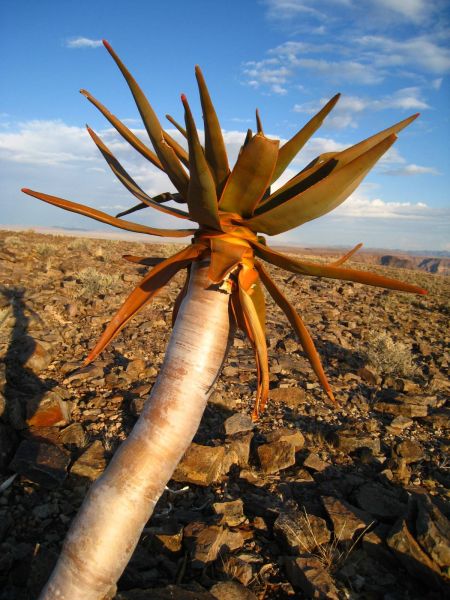
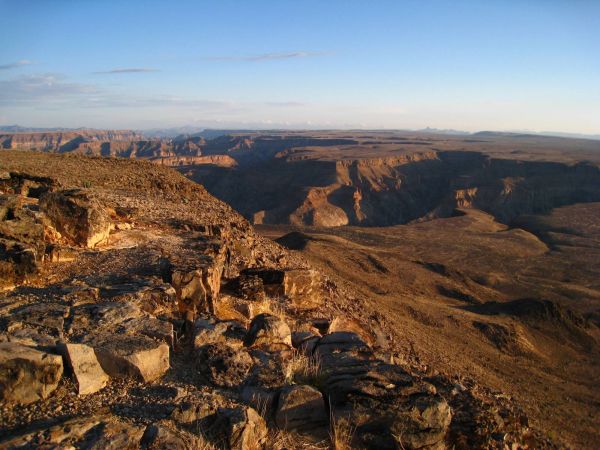
The next day, back at the scene to enjoy a sunrise. The day goes on at the edge of the cliff. Strange trees dot the dry ground, they are called the kokerboom or « quiver trees » A tree and cactus blend. It's among its gnarled branches the social republican has decided to build its nest. This bird helped by mates build the nest for the whole community. A giant multiple-entry nest. Their motto: to take the advantage of the fellow-citizens mutual aid in order to have a low-cost accomodation but keeping a sort of privacy however.
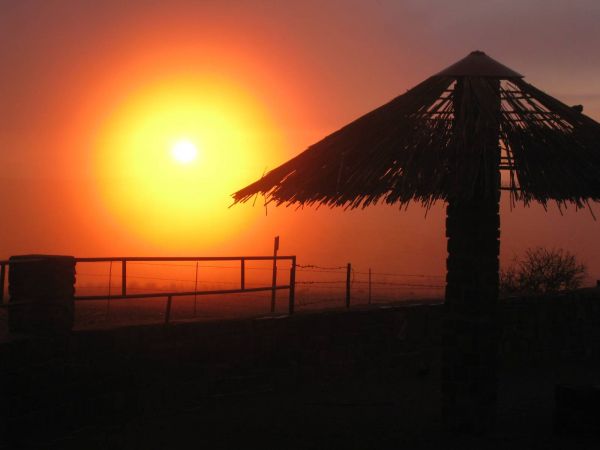

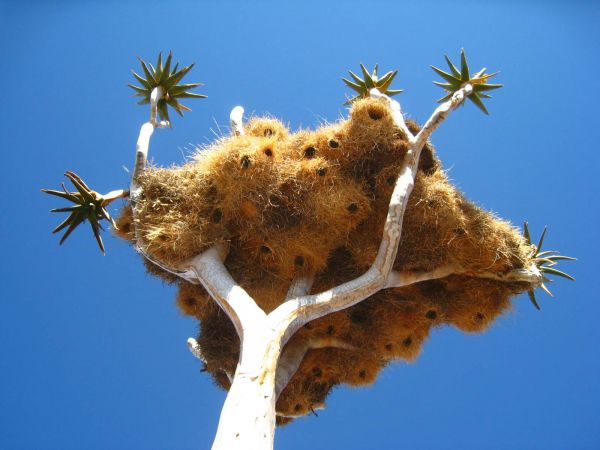
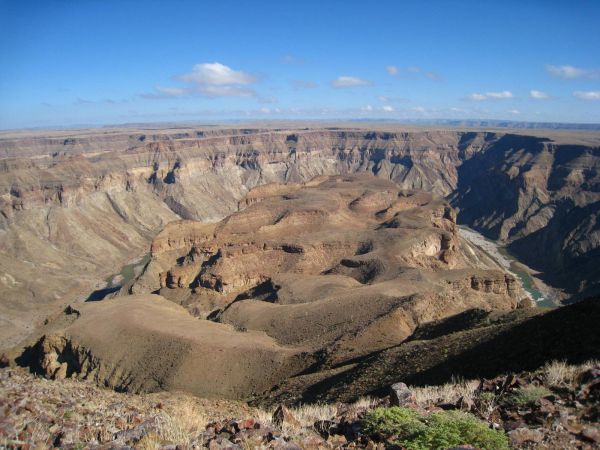
Monday 16 June 2008
From a cape to another one
By dorian on Monday 16 June 2008, 16:08 - RTW2-South Africa
A 10-hour flight to leap from an hemisphere to the other. I fall asleep in London and I wake up in the Nelson Mandela's country. As the plane goes up to the airstrip, a stack of corrugated iron and twisted wood shape a makeshift city. Shanty towns stretch out over hectares and reflect the image of a sad reality ; the stakes of a country who, clearing away the evil spirit of Apartheid must bustle about filling the disparities between two universes – the opulence one and the need one – who justapose without looking at each other nor confront one another.
The recent events causing the flight of herds of Zimbabwean immigrants don't put my mind at rest while I put the foot down on the African ground. I disembark in a small airport – Welcome to Cape Town. I load my bag, take some information from the tourist office before hopping on a collective taxi that drops me off by the guesthouse where I have an appointment with my brother and his friend Ronan.
We hire an Opel Corsa that will acompagny us throughout our African odyssey. And our first outing has a still mythic name for generations of navigators and explorers : the cape of good hope. Vasco de Gama was the first one to open the maritime way to the Indian subcontinent skirting around Africa and, not far from the rocky promontory, a cruce has been erected in tribute to the great navigator he was. Along the road, small seaports brighten up the ride. Winds and bad weather are the everyday life of the intrepid sailors who lives here.
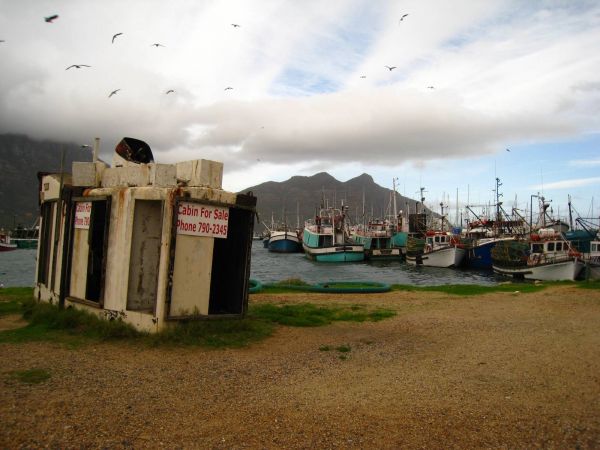
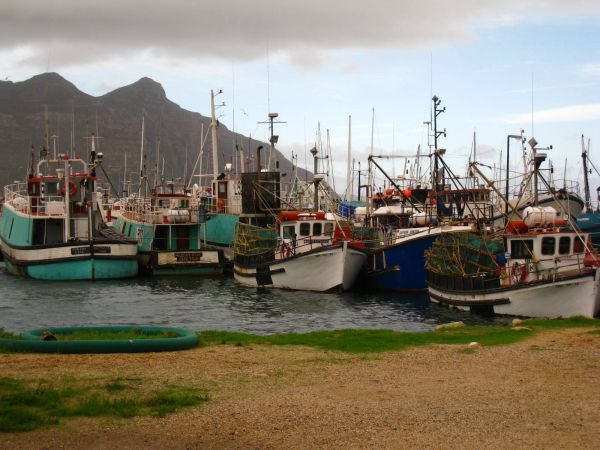
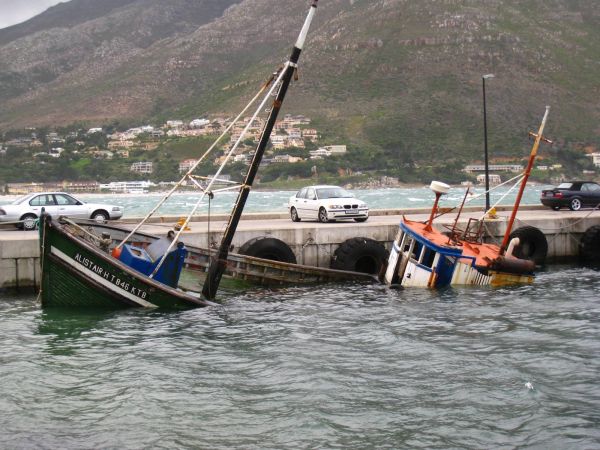
Our road stops at the end of the peninsula. Welcome to Cape point, a jagged lighthouse-topped hillock. A cable-car saves the laziest people walking uphill. Beyond the luminous marker, millions of cubic meters of water separate us from Antartica, the white continent.
On the right side, about one hundred meter away from Cape point, the foam runs aground the cape of good hope. And for the sailors, the ending sign of heading south. Bear to port! Still a few miles and the sailing northwards the African continent will be started. The cap of good hope is not the southernmost point of Africa since it was supplanted by the Agulhas cape but it's far more representative in the change of heading that the boat took and keep on taking.
The wind pulls our last remaining hair out but the view of the breathtaking cliffs of Cape point is worth struggling few minutes against Eole.
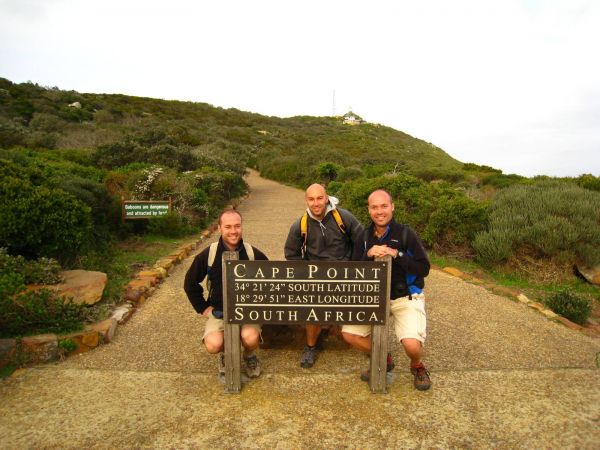
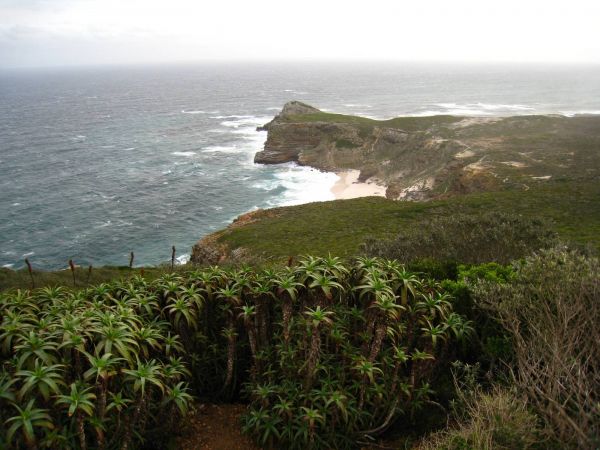
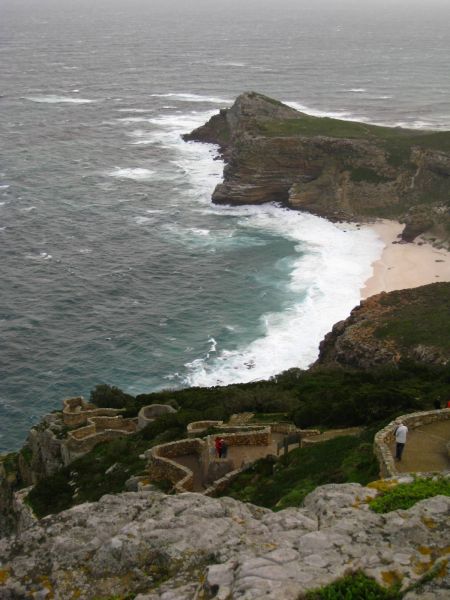
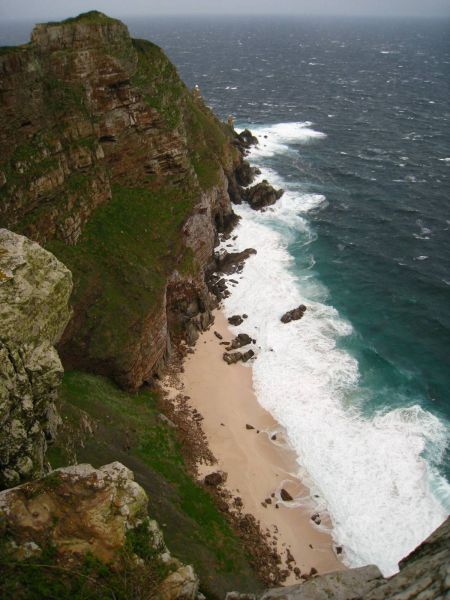
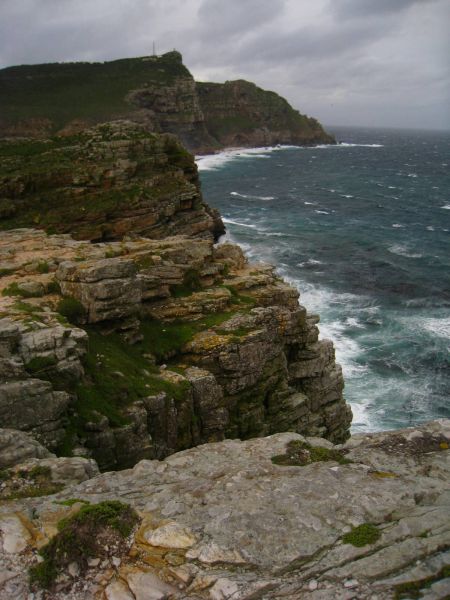
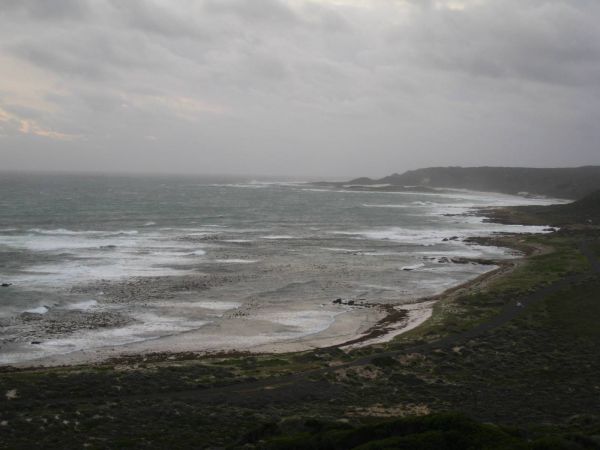
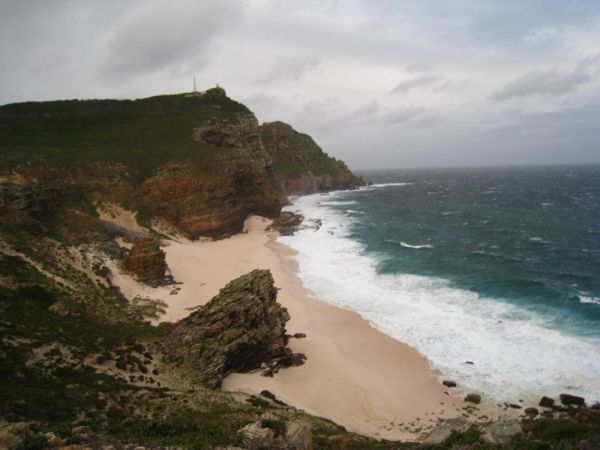
On the way back, we make a short break at Boulders beach where few families of penguins settled. Uneasy to near them. So we sit down and delight in these moments.
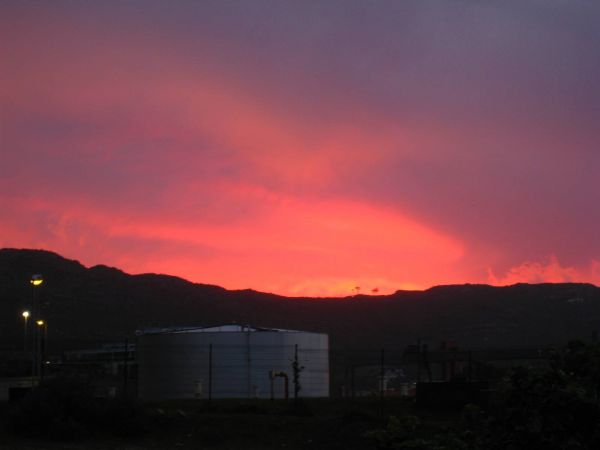
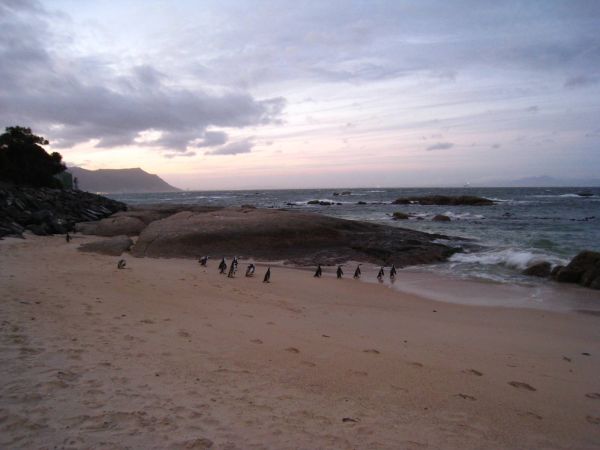
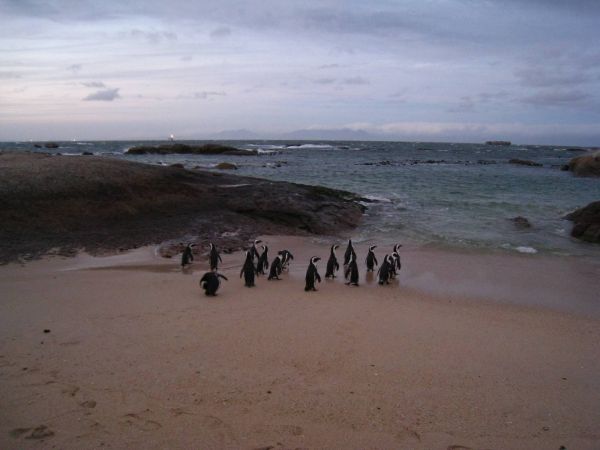

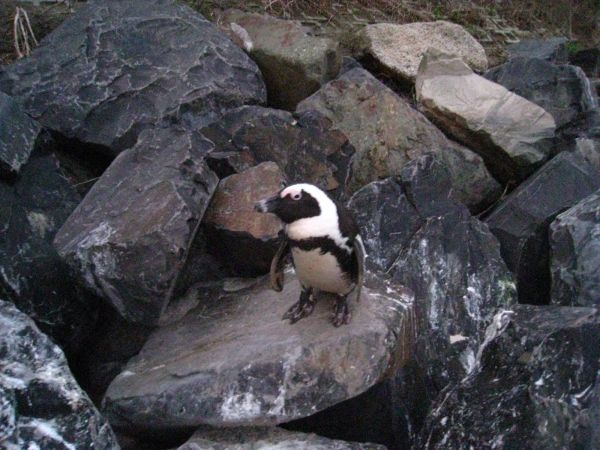
In the evening, we chat with Zimbabweans, Congolese and South-africans who, despite the political tension in their respective countries share a certain joie de vivre. The first day of my round-the-world trip ends, far from the apprehension I had this morning as I arrived... A day which starts a 2-month African adventure between deserts, safaris, meetings and a laidback way of life only Africa can offer.
« previous entries - page 23 of 54 - next entries »






 visits
visits